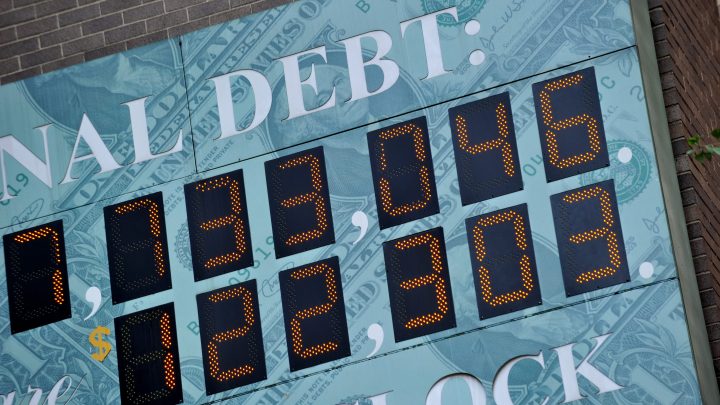
Breaking down the national debt and budget deficit
Breaking down the national debt and budget deficit

Look, the economy is complicated and it moves fast. News breaks and headlines don’t always tell the whole story. That’s why we’re launching a new series where we take it back to the basics. It’s called “Kai Explains.” This time, we’re talking about something that’s talked about a lot in the news — the national debt and budget deficit.
What is the national debt?
“The national debt is basically all of the money that the federal government has borrowed over time,” said Veronique de Rugy, a senior research fellow at the Mercatus Center at George Mason University.
The debt is the sum of all past deficits, plus additional borrowing and surpluses. It reflects how much the government has borrowed over its history.
About two-thirds of the national debt is called debt held by the public. The government owes this debt to buyers of U.S. Treasury bills, notes and bonds. It includes debt held by banks, insurance companies, pension funds, mutual funds, state and local governments, foreign governments, foreign businesses and the U.S. Federal Reserve Bank.
The remaining third is called intragovernmental debt, which is debt that one part of the government owes to another part. Social Security and other trust funds are the biggest owners.
The total national debt is more than $22 trillion — that’s a record high.
What is the budget deficit?
“A deficit occurs when the amount that the government collects in revenue through taxes, typically, is less than the amount that they are outlaying,” said Valerie Ramey, professor of economics at University of California, San Diego.
So the federal government runs a deficit when its spending exceeds its revenue and it needs to borrow money to make up the difference.
Deficits are how much the country borrows each year. The U.S. budget deficit for fiscal year 2020 is projected to be $1 trillion. Each year’s deficit adds to the national debt.
When is it good for the country to borrow money?
Good reasons to borrow are to invest in something that is going to improve a country’s prospects in the future. When done correctly, public debt can help improve the economy.
“If the U.S. government uses its spending — runs a deficit — but uses its spending to build up infrastructure, or to invest in people’s education, or any sort of thing that will actually improve the economy, improve [gross domestic product] in the future, then that’s a good idea,” Ramey said.
What do you want explained next?
There’s a lot happening in the world. Through it all, Marketplace is here for you.
You rely on Marketplace to break down the world’s events and tell you how it affects you in a fact-based, approachable way. We rely on your financial support to keep making that possible.
Your donation today powers the independent journalism that you rely on. For just $5/month, you can help sustain Marketplace so we can keep reporting on the things that matter to you.


















